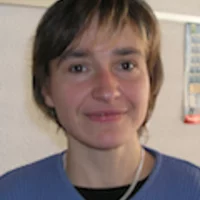The thermal neutron single crystal instrument ZEBRA is a flexible monochromatic diffraction instrument for applications in magnetism and classical crystallography, covering fields such as materials science, multiferroics, highly correlated electron systems. The available neutron wavelengths (1.18Å, 1.383Å and 2.31Å), the flexible computer controlled inpile-collimation, the three detectors (single tube, single tube with analyser, 160mm x 160mm area detector with radial collimator) and the possibility to tilt detectors out-of-plane are key components.
Operating in 4-circle mode (1.5K up 1200K) or tilting mode (50 mK up to 1200 K, fields horizontal up to 4.5 Tesla, vertical up to 12 Tesla, pressures up to 100 kbar) gives access to a wide range of conditions. Special sample environment brought-in by the user can also be easily installed.
Complicated modulated structures can be investigated by the possibility to switch from the single detector to the area detector by one turn. Dedicated software allows analyzing area detector data and complete datasets in a fast way, making them ready in formats commonly used refinement programs.
Details of the instrument can be found in the description section, in particular the instrumental parameters and the available dedicated sample environment for the 4-circle mode.
ZEBRA is operated by the Laboratory for Neutron Scattering and Imaging, LNS.
| Beam Tube | SINQ, thermal beam tube R42, H2O-scatterer |
| Monochromators | Ge311 (λ = 1.177 Å), Ge220 (λ = 1.383 Å) and PG002 (λ = 2.317 Å), vertical focusing 2ΘMonochromator = 38.8o (fixed) |
| Optional Collimation | 80', 40', 20' |
| Resolution | Δd/d > .005 |
| Flux at Sample | max. 2.2x106 n/cm2/sec (1.35mA on SINQ) |
| Crystal Size | ideal 3-5 mm3, down to sub 0.1 mm3 and not larger than 1cm2 cross section (size of homogeneous beam) |
| xyz-Adjustment | x,y:+/- 15mm, z:+/- 30mm |
Secondary Instrument (I)
- 2D He3-area-detector, 160 mm x 160 mm (oscillating radial collimator)
- single He3-tube (soller collimator: 80', 40', 20')
Secondary Instrument (II)
- single He3-tube (soller collimator: 80', 40', 20') with PG analyser
Momentum transfer
6o< 2Θ <128o, λ=1.18Å: max.sinΘ/λ=0.77 Å-1, λ=2.317 Å: max.sinΘ/λ=0.39 Å-1
Operation modes
ZEBRA is operated in two operation modes: 4-circle equatorial geometry (γ = 0o) and tilting geometry(-14.5o< γ <15o)
Equipment for 4-circle-mode
- cryogenics 15-450 K (APD), 4.5-300K (CCR3)
- cryogenics (1.7-300 K, JT-CCR)
- pressure cell (20 kbar, T > 4.5 K)
- photocrystallography (400-800 nm, 100mW/cm2, T > 50 K)
- vacuum furnace (300K-800K)
Equipment in tilting mode
- magnetic field: 6 and 10 Tesla vertical magnets with large out-of-plane openings, 12 Tesla vertical in MA15 (small vertical opening), and 4.5 Tesla horizontal in MA7
- cryogenics (T > 50 mK (dilution stick))
- furnaces (<2000K)
- any other equipment available at PSI
News
pyzebra software package for experiment planning and data analysis
https://gitlab.psi.ch/zebra/pyzebra

